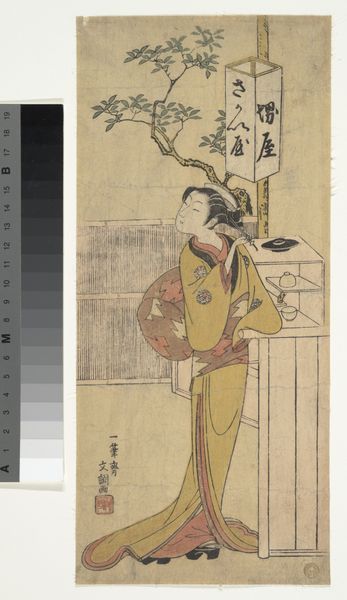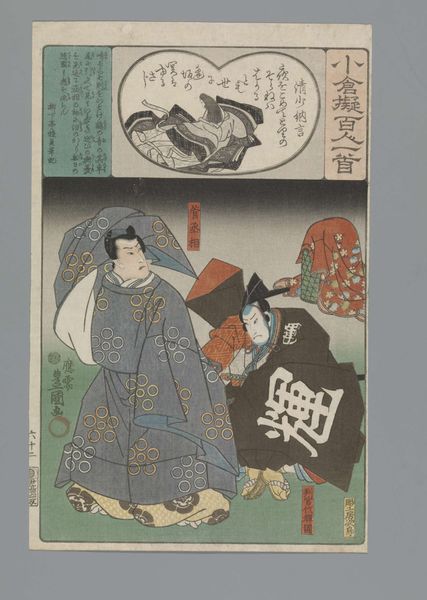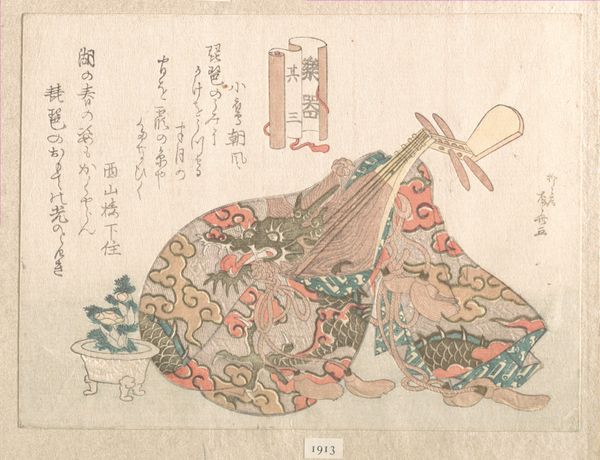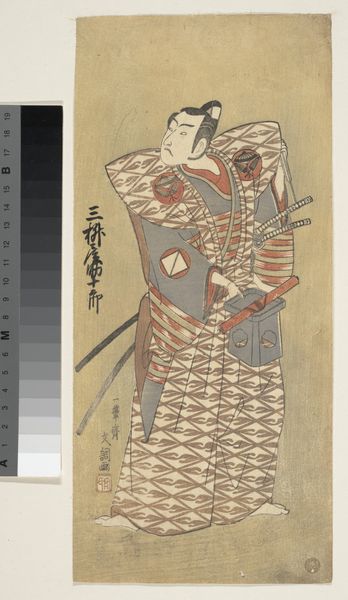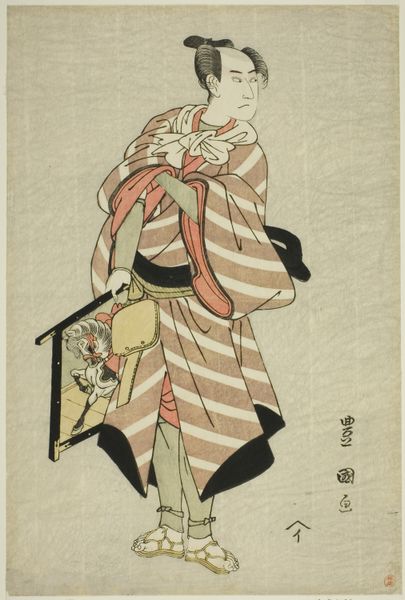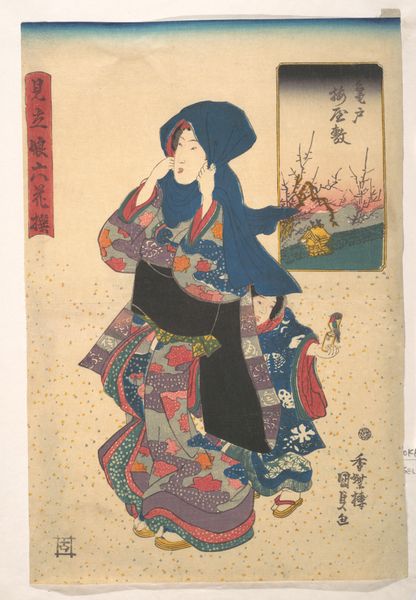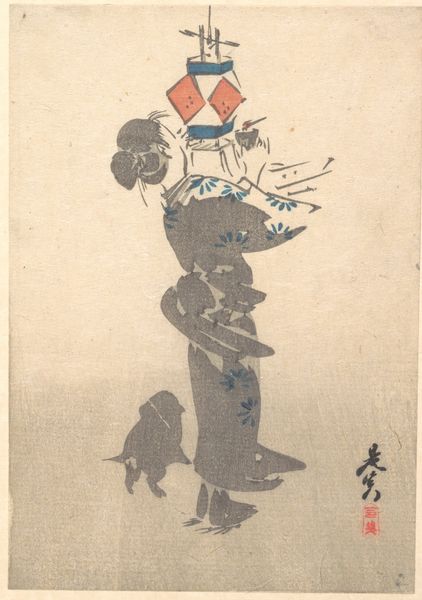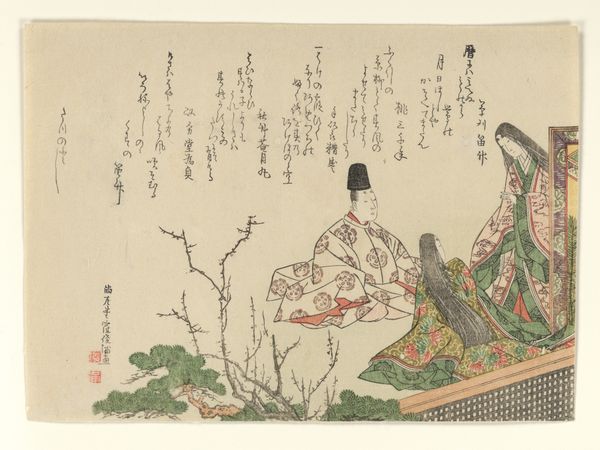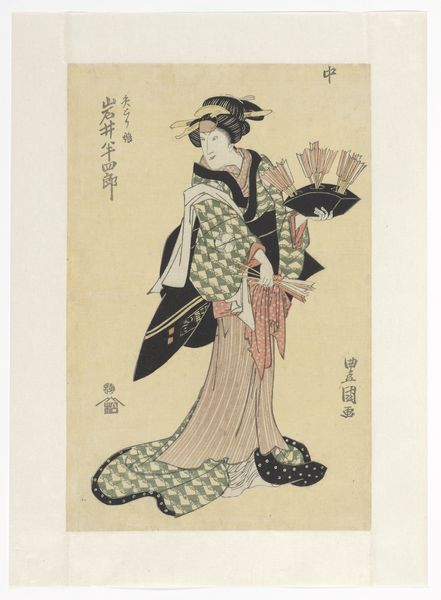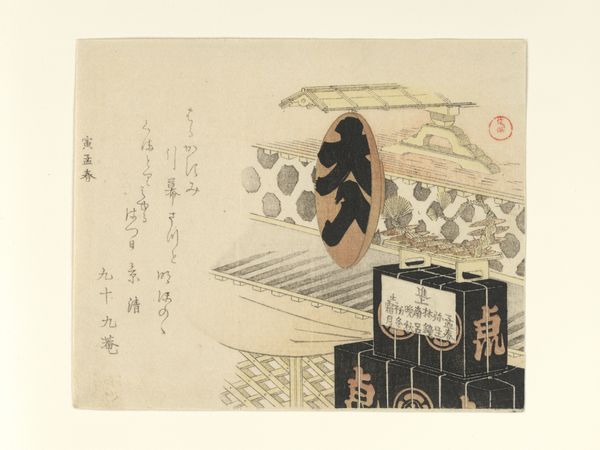
The Courtesan Kasugano Writing a Letter 1755 - 1775
0:00
0:00
drawing, print, textile, paper, ink, woodblock-print
#
portrait
#
drawing
# print
#
asian-art
#
textile
#
ukiyo-e
#
paper
#
ink
#
woodblock-print
#
genre-painting
Dimensions: 8 3/8 x 5 3/4 in. (21.3 x 14.6 cm)
Copyright: Public Domain
Editor: This is "The Courtesan Kasugano Writing a Letter" by Suzuki Harunobu, created sometime between 1755 and 1775. It's a woodblock print, isn't it lovely? The woman looks so serene, almost contemplative. What do you see in this piece, particularly concerning its context within Japanese society? Curator: Well, it's crucial to remember that Ukiyo-e prints, like this one, weren't simply aesthetic objects. They were deeply interwoven with the social fabric of Edo-period Japan. This print depicts a courtesan, a figure occupying a complex space in the culture. How do we reconcile the artistry and seeming serenity with the reality of the woman's position within a hierarchical social system, a system which to some extent objectified women? What kind of message was sent to its contemporary audience? Editor: I see what you mean. It's easy to get lost in the beautiful lines and colors and forget the social realities. Does the print perhaps serve to romanticize or even idealize this woman's profession? Curator: Exactly! And for whom was that romanticization intended? Were these prints consumed primarily by men? And what does it tell us about the societal expectations and fantasies of the time regarding femininity and labor? I also notice how she is writing - what does the act of writing itself mean in terms of female agency, power, or even resistance? Think about who had access to literacy and education. Editor: So, beyond just being pretty, this print also tells us something about gender, class, and perhaps even female literacy during that time period. That really changes how I look at it. Curator: Precisely. This approach allows us to engage with the work not only on a purely aesthetic level, but as a commentary on complex power structures within a specific cultural and historical context. Now you might wonder, how do its depictions compare with, say, that of contemporary Japanese women? Editor: That gives me a lot to think about. I never considered how many layers of interpretation could be embedded in such a seemingly simple image!
Comments
No comments
Be the first to comment and join the conversation on the ultimate creative platform.
